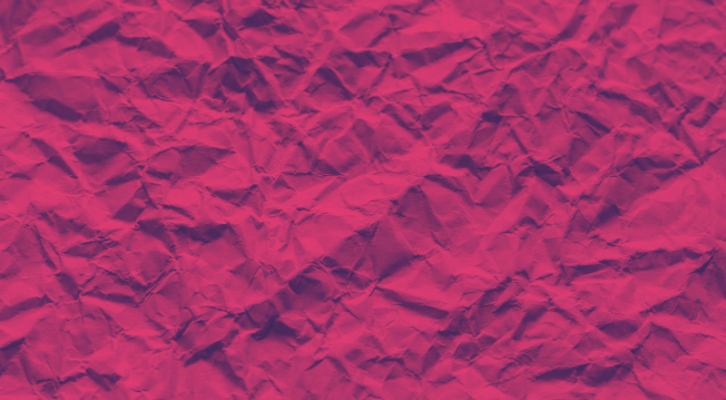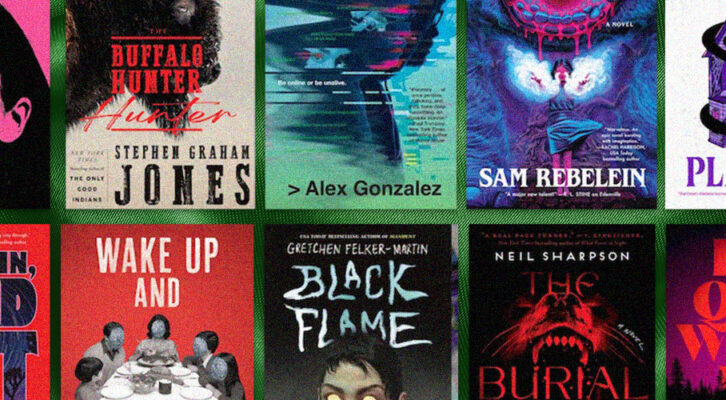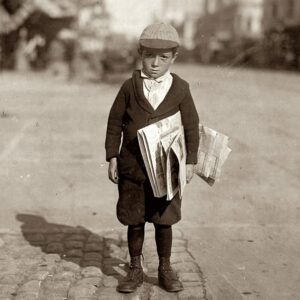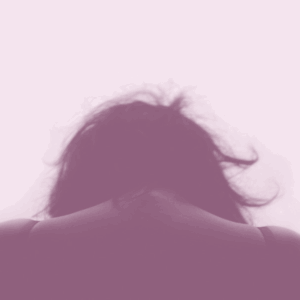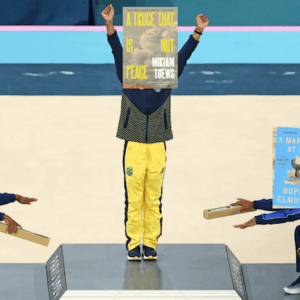This first appeared in Lit Hub’s Craft of Writing newsletter—sign up here.
It was in the first week of NYU’s creative writing summer intensive that I learned that writing badly was the route to turning delusion into reality.
One of the course leaders was poet Ruth Danon. Her lecture casually mentioned the importance of “letting yourself write bad” as an essential part of the creative process. She then gave us time to free write, encouraging us to be bad at it. I had no idea how heavy my fear of imperfect writing was until it evaporated under the fluorescent lights of a Greenwich Village classroom. It turned out that all I needed was permission.
Now, my shitty first drafts would make Anne Lamott proud. Each draft begins with random ideas and quotes and memes and potential sources and reference links all splattered on the page in various fonts and colors. Then somehow, there’s this magical moment when those sentence fragments and scribbles shapeshift into a decent piece of writing. This transition is akin to witnessing alchemy, much like when I snip a plant cutting to place in water, watching it grow roots until the cutting becomes its own plant. Perhaps writing badly is a form of propagation. Published writing has to start somewhere.
The truth is that no matter how much you agonize, there is no perfect first draft. In fact, those who think their first drafts are perfect are usually the one who need the most editing. But all writers need editors, just as musicians need producers. Sure, you can do the whole thing yourself, but outside perspective and insight are how projects come to life.
That NYU course also taught me the importance of feedback and reading my writing out loud—something I now encourage my students to do. Writing your ideas down is phase one. Reading your words, hearing chuckles—or dead silence—from your peers lets you know what resonates with your audience and what doesn’t.
Bad writing becomes good writing when we learn to workshop and receive feedback. I regularly teach students with MFAs or PhDs in creative writing who can write the most beautiful sentences, but when it comes to workshopping and getting feedback, they often freeze or feel attacked. I’d argue that a piece of writing without feedback is just journaling. I don’t mean “just” in the diminutive, minimizing sense. More as an acceptance of fact. Writing can, and often does, begin as a form of journaling. But journaling for a private audience of one is vastly different from reading those words to a class or teacher in hopes of one day publishing those words. Reading aloud also helps you articulate your ideas in a way that silently typing doesn’t allow.
Cartoonist and author Dana Jeri Maier mentioned at her 2023 book launch how she draws fish to “warm up.” When hearing her describe her process, I wondered what a writer’s fish would be.
I often begin my writing sessions by writing pure nonsense. For example, I’ll write,
The sky is blue
The blue sky has clouds
I love flying through clouds because it feels like a magic trick.
Why are we bisexual folks often associated with magicians?
Then before I know it… I’m writing. Perhaps asking questions is my fish.
Letting yourself be bad at something is a radical act in a world that demands a polished, filtered, curated version of you. Creating terrible art because we trust that it might become good art is the whole point. If we don’t enjoy the artistic process, do we actually enjoy being artists?
“Treat your writing like you’re learning to play an instrument,” I tell my students. You don’t have to write every day, but you do have to play a lot of notes out of key to learn what the right pitch sounds like.
Watching blooper reels from The Office reminds me of the importance of making “mistakes.” Seeing high-caliber actors fumble their lines, then laugh together, personifies what it means to truly enjoy the creative process. Writing badly is also like watching different versions of director’s cuts or seeing different takes of the same scene. Sometimes, an actor needs to perform the scene multiple times before they can really nail it.
Writing badly is far from an innovative concept. We’ve all seen that trope in films or plays where a writer furiously types at the typewriter only to frantically rip that page out, crumple it into a ball, then toss it into a trash can overflowing with other drafts. It’s different now with devices and laptops and spellcheck and AI. While modern writers usually write digitally, we still channel that crumpled page in the trash can energy when we let ourselves write badly. It’s also worth noting that outsourcing a shitty first draft to ChatGPT means the writer misses this crucial process entirely. Which is also to say that writers won’t get deep enough into their writing to truly understand what it is if a robot does the excavation.
I recently took a comedy writing class from author Elissa Bassist, whose next book is Inside Jokes: A Comedy and Craft Writing Guide for All Writers, co-written by Caitlin Kunkel. Elissa encouraged students to “try terribly” when she assigned a writing prompt. I loved this phrasing so much that I later asked her about it over email. “I got ‘try terribly’ from Samuel Beckett’s line, ‘Ever tried. Ever failed. No matter. Try again. Fail again. Fail better,’” she told me. She refers to her philosophy as, writing like an idiot. “We must be terrible to become good. There is no other pipeline,” she says.
Learning how to write badly isn’t learning a new skill; it’s learning how to tell perfectionism that it can no longer control my creative endeavors.
Bassist’s writing partner, Caitlin Kunkel, described it this way: “I need to write around, toward, and at an idea before I find my way into it. If I didn’t let myself ‘write bad’ I would always be stuck on the surface rather than scratching down layer after layer to what I really want to say.” Writing advice from comedy writers really does hit different.
“Writing a messy, unclear, illegible, overwrought, confused, cliched, underdeveloped draft is the only way I know how to write anything worth reading,” memoirist and teacher, Margo Steines recently told me, “Perfectionism on the page is a distress tolerance issue. So I get to choose—do I want to sit with the uncomfortable reality that I have made something that is not yet good? Or do I want to sit with the uncomfortable reality that I have not made anything at all?”
This conversation reminded me of early sobriety when life without a drink felt impossible. I had a choice to sit with the discomfort of facing my self-destructive habits or keep living a life that avoided discomfort. I chose the former. Learning how to write badly isn’t learning a new skill; it’s learning how to tell perfectionism that it can no longer control my creative endeavors. I often wonder if Writer’s Block is real or if people are just terrified of letting themselves be bad at something.
I’ve now been in New York City for 10 years, seeing many writers come and go for various reasons. I’m seen as a writer who’s “made it” because I wrote a book, but my book wouldn’t exist without writing bad. In fact, Ruth is the first person I thank in my book’s acknowledgments section. Decades of perfectionism mixed with caring way too much about what people think prevented me from getting words on the page. Now I’m lucky enough to know that being bad is the only way to be good.
Tawny Lara
Tawny Lara is the author of Dry Humping: A Guide to Dating, Relating, and Hooking Up Without the Booze, co-host of the Recovery Rocks podcast, and co-founder of the vinegar-based botanical beverage, (parentheses). Her newsletter, Beyond Liquid Courage, explores life beyond sobriety.









